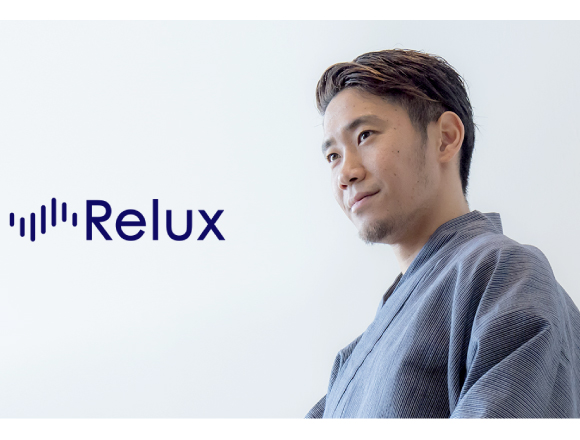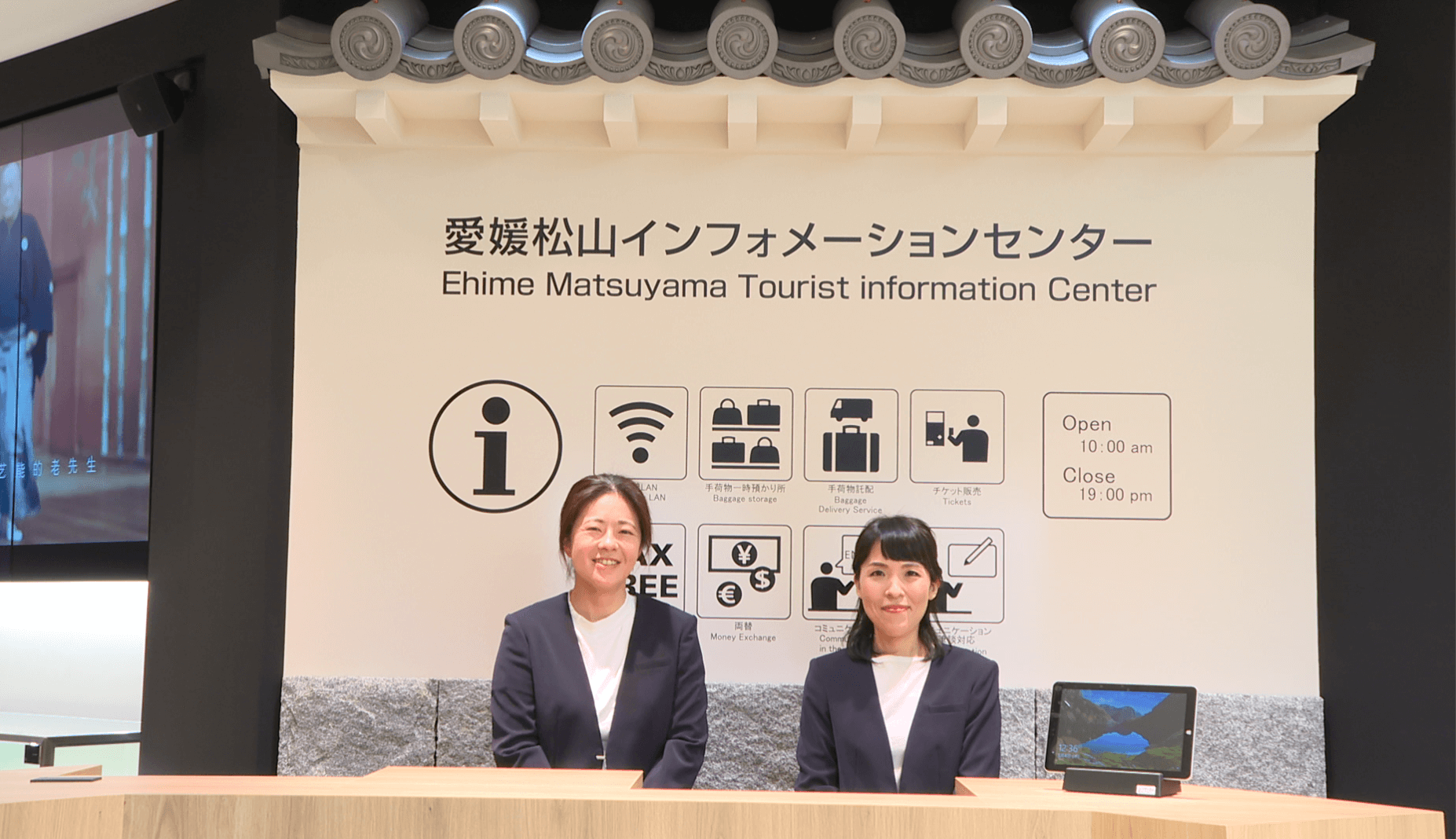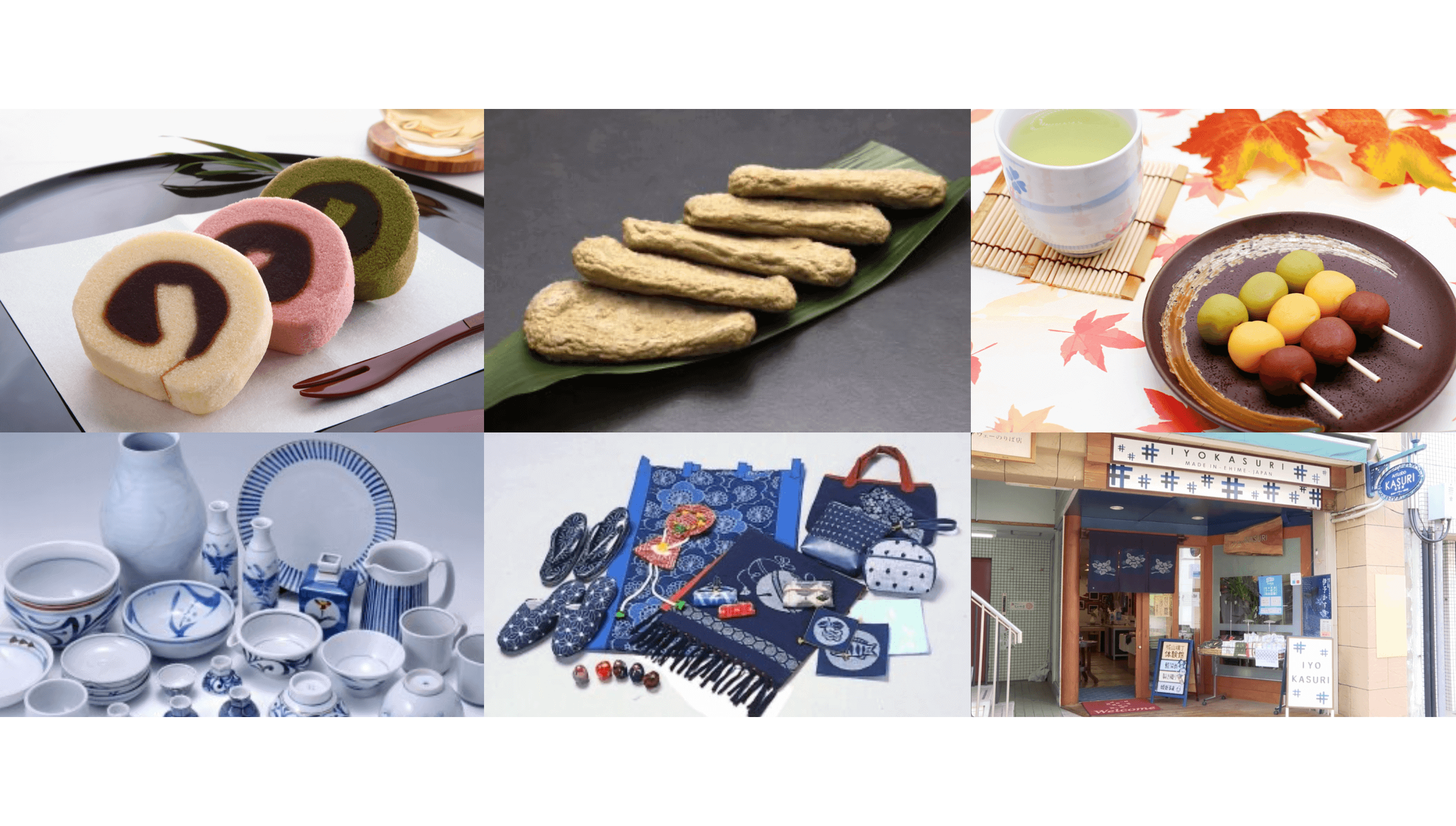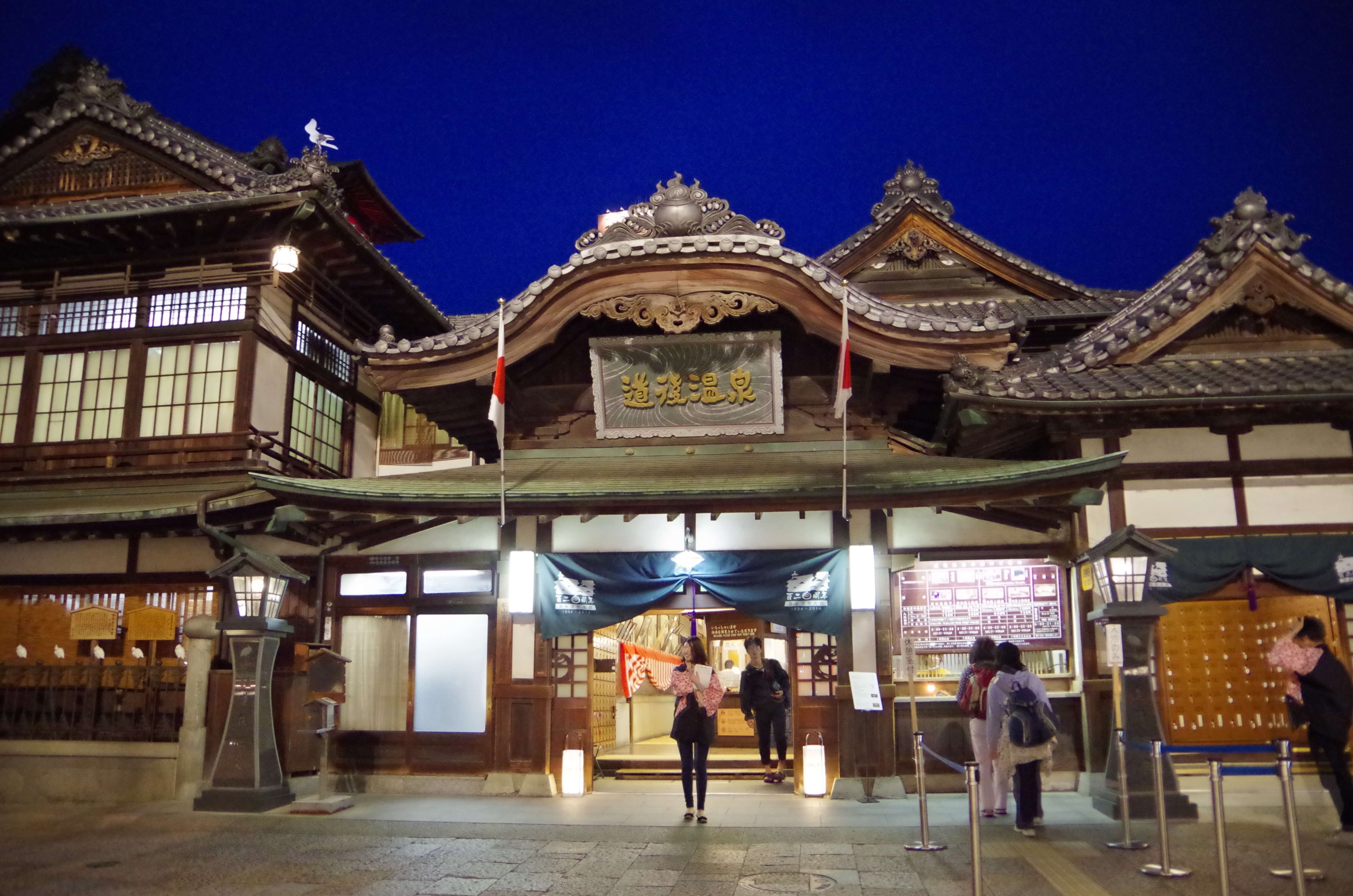Japanese Professional Footballer Shinji Kagawa Officially Appointed as Ambassador to Promote Japan Overseas
29.July.2017 | SPOT
Japanese professional footballer Shinji Kagawa has been appointed an official ambassador of “Relux,” a hotel booking site that offers a carefully selected line-up of the best hotels and ryokans around Japan. As an ambassador, Kagawa’s job will be to actively promote travel to Japan and the appeal of regions around Japan to the rest of the world.
In line with the news of his appointment, a video was officially released of Kagawa to promote Japanese ryokan, which is a traditional Japanese style inn.

Relux enables its members to pick the very best of Japan’s hotels and ryokan. The website showcases the uniqueness of each and every one of its listed hotels by detailing the culture, history and famous products surrounding their locations. They explain the establishment of each accommodation as well as the appeals of the regions they are situated in.
The reason behind Shinji Kagawa’s appointment lies in his extensive knowledge of Japan’s appeal and tourist attractions, as well as his experience living overseas for many years. As a footballer, Kagawa’s main focus has been his sport, but he expressed a deep desire to promote Japanese culture such as its fashion, food and lifestyle during his off season periods. It was therefore decided that he would become an official Relux ambassador.
The video released in line with his appointment shows him off season. He is located at the hot spring ryokan “Hakone Suishoen” which is a place listed on the Relux website. The video itself is a must-watch as we get to see Kagawa dressed in a yukata looking very relaxed while expressing his enthusiasm for Japanese ryokan, including hot springs and the tea ceremony.

Moreover, in conjunction with Kagawa being made an ambassador, Relux are hiring supporters to further promote their regions, meaning people in Japan can help spread the charm of Japan’s regions together with Shinji Kagawa, a man at the forefront of football worldwide!
■Information
“Relux” – Membership Booking Website for First Rate Hotels and Ryokan
Official Website: https://rlx.jp
Relux Supporters – Entry Deadline: September 10, 2017
Supporter Sign-up Page: https://rlx.jp/ambassador
Related Article:Ryohin Keikaku to Hold “My Found MUJI East Asia” Exhibition
Related Article:5 Yukata Rental Shops in Tokyo—Enjoy the Japanese Summer Fireworks and Festivals Even More
RELATED ENTRIES
-
AEON Releases Limited Edition Collection Inspired by Captain Tsubasa
25.November.2022 | ANIME&GAME / FASHION
On November 18, AEON’s fashion brand Doublefocus launched six pieces of apparel inspired by the soccer series Captain Tsubasa! These items will be available at 260 AEON and AEON Style locations nationwide as well as AEON Style Online.
Captain Tsubasa Sweatshirt


Captain Tsubasa Hoodies




Track Jacket
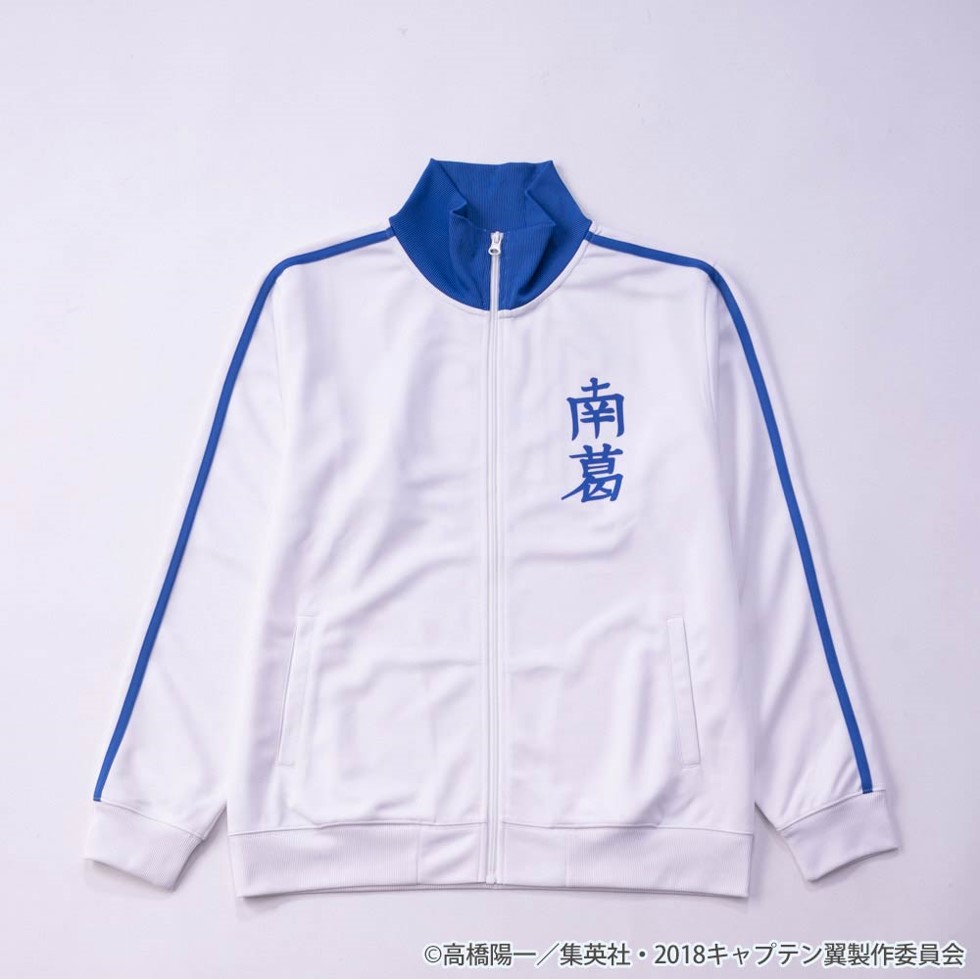

T-Shirts


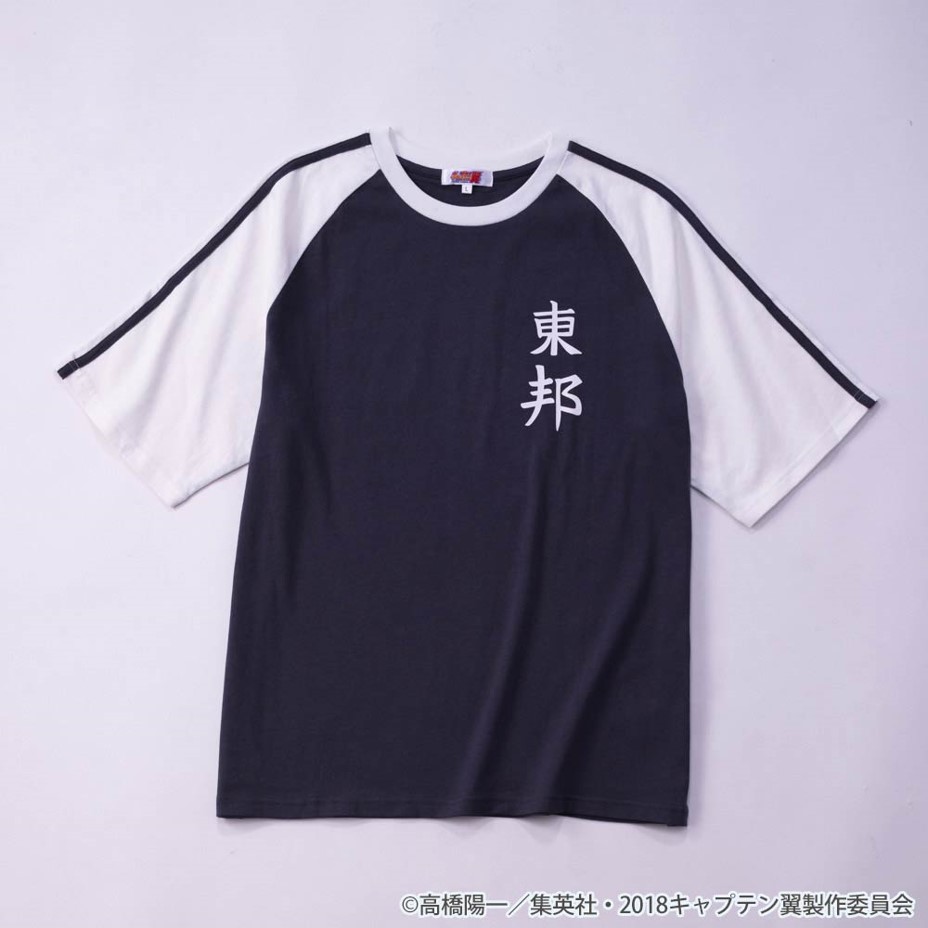

Soccer is becoming more popular in Japan, and this is becoming apparent through its inclusion in various anime and manga series. If you’re a fan, be sure to grab one of these Captain Tsubasa shirts, sweatshirts, or hoodies!
(c) 高橋陽一/集英社・2018キャプテン翼製作委員会
Information
Captain Tsubasa Collection
Release Date: November 18, 2022
Where to Buy: AEON and AEON Style locations nationwide
Web Shop:https://aeonretail.com/list/f-doublefocus-anime-02/
Sizes: S – XL
*S sizes for men are only available at select stores and AEON Style Online.
-
Miyavi’s New Song ‘Fearless’ Chosen as Theme Song for WOWOW European Soccer
12.August.2022 | MUSIC
WOWOW will be broadcasting an incredible amount of European soccer matches during the 2022-23 season, including the Spanish LaLiga starting August 13. The UEFA Champions League and UEFA Europa League competitions will decide who is the best on the continent, and many are ready to tune in.
The WOWOW European Soccer Theme Song for this season will be Fearless by the globally popular performer Miyavi, known to many as the samurai guitarist.
Fearless was written by Miyavi himself. The artist formerly played soccer for Cerezo Osaka and channeled his memories of the competition and supporters into his music and lyrics. The song will begin airing during matches starting with the UEFA Super Cup 2022: Real Madrid vs. Frankfurt match on August 11. This season will be even more exciting than usual, with the World Cup scheduled to take place this November and December in Qatar.
Comment from Miyavi“As a child, I wanted to become a professional soccer player and I practiced kicking a ball around every day. As a soccer fan, I imagined a song that would be played in a stadium and that everyone in the audience could sing along with.
I created the music and melody to inspire listeners to feel a sense of unity and to soothe the soul.
When I’m about to perform live or participate in a photo shoot, I always feel that sense of nervousness before a fight–that fear of failure before a challenge. I think that’s something everyone has felt at some point. All we need to do is put in the energy and work to overcome it. I hope you’ll sing along with the song, even at home in front of your TV.”
Information
WOWOW European Soccer
Details: https://www.wowow.co.jp/sports/liga/
Theme Song
Fearless – MIYAVI
-
Demon Slayer and J-League Team ALBIREX Collaboration Goods Now Available
22.September.2021 | ANIME&GAME / FASHION
A new collaboration is bringing sports and demon-slaying together! For the SPORTS2021 x Demon Slayer event, the popular series is partnering with three sports leagues: the NPB, J-League, and B.League. Goods are now available for the long-awaited collaboration between Niigata’s ALBIREX soccer team and Demon Slayer, so sports and anime fans should snag some merchandise before it’s all gone!
Items are available to pre-order online now until 2:00 on September 27, 2021.

ALBIREX x Demon Slayer T-Shirt: ¥3,600 (Tax Included)

ALBIREX x Demon Slayer Face Towel: ¥2,100 (Tax Included)

ALBIREX x Demon Slayer Mini Towel: ¥600 (Tax Included)
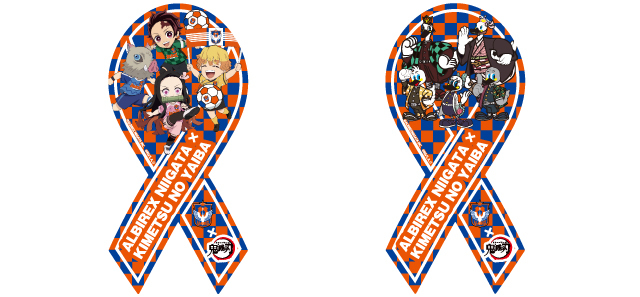
ALBIREX x Demon Slayer Ribbon Magnet: ¥1,980 (Tax Included)

ALBIREX x Demon Slayer Mug: ¥1,800 (Tax Included)
Don’t miss out on these one-of-a-time items!

Information
ALBIREX x Demon Slayer
Pre-order Period: September 18, 2021 – September 27, 2021 2:00
Pre-order Site: https://www.albirexshop.com/SHOP/1142321/list.html
*Limited quantity available. Pre-orders will end when items are sold out.
Official Site: https://www.sports-kimetsu.com/
-
WE League’s New Uniform to be Designed by X-girl
28.July.2021 | FASHION
The Women’s Empowerment League, or WE League, will be the first professional women’s football league in Japan. Set to begin this year on September 12, BEAMS International’s women’s streetwear brand X-girl is designing the uniform for seven of the 11 participating clubs including Mynavi Sendai, Omiya Ardija Ventus, Chifure AS Elfen Saitama, JEF United Chiba, Nojima Stella Kanagawa Sagamihara, AC Nagano Parceiro, and Albirex Niigata.
‘Wear the Hope’ is the design concept behind the uniforms. Hoping to offer women courage, the uniforms embody the potential of women, with each club and its members’ personalities expressed through colour and distinct design. It’s a combination of soccer and street styles that screams ‘this is definitely by X-girl.’
JEF United Chiba
Using a nanohana yellow as its base, the JEF United Chiba Uniform incorporates a classic camouflage design in the shape of Chiba that elicits a feeling of walking through the prefecture where the team are from.

Albirex Niigata
Albirex Niigata’s uniform colour is derived from Albireo, the double star in the head of the constellation of Cygnus which the team’s name originates from. It’s a combination of orange and blue, which makes one think of the gorgeous setting sun of Niigata above the Sea of Japan, and white, which is a reference to the swans returning home as well as the snow during winter.

Nojima Stella Kanagawa Sagamihara
The corporate colours of Nojima blue and Nojima red are used for this uniform as a nod to Nojima, the electronics stores and parent body of the club located in the centre of Sagamihara. It has a futuristic design inspired by the digital world and electronics.

AC Nagano Parceiro
‘Parceiro’ is Portuguese for ‘partner’ and refers to the partnership between the club and the region. The uniform uses triangles as its design base to represent three entities: the club, its sponsors, and its supporters. It also takes inspiration from Nagano’s gorgeous mountains while the stripes represent oneness and speed.
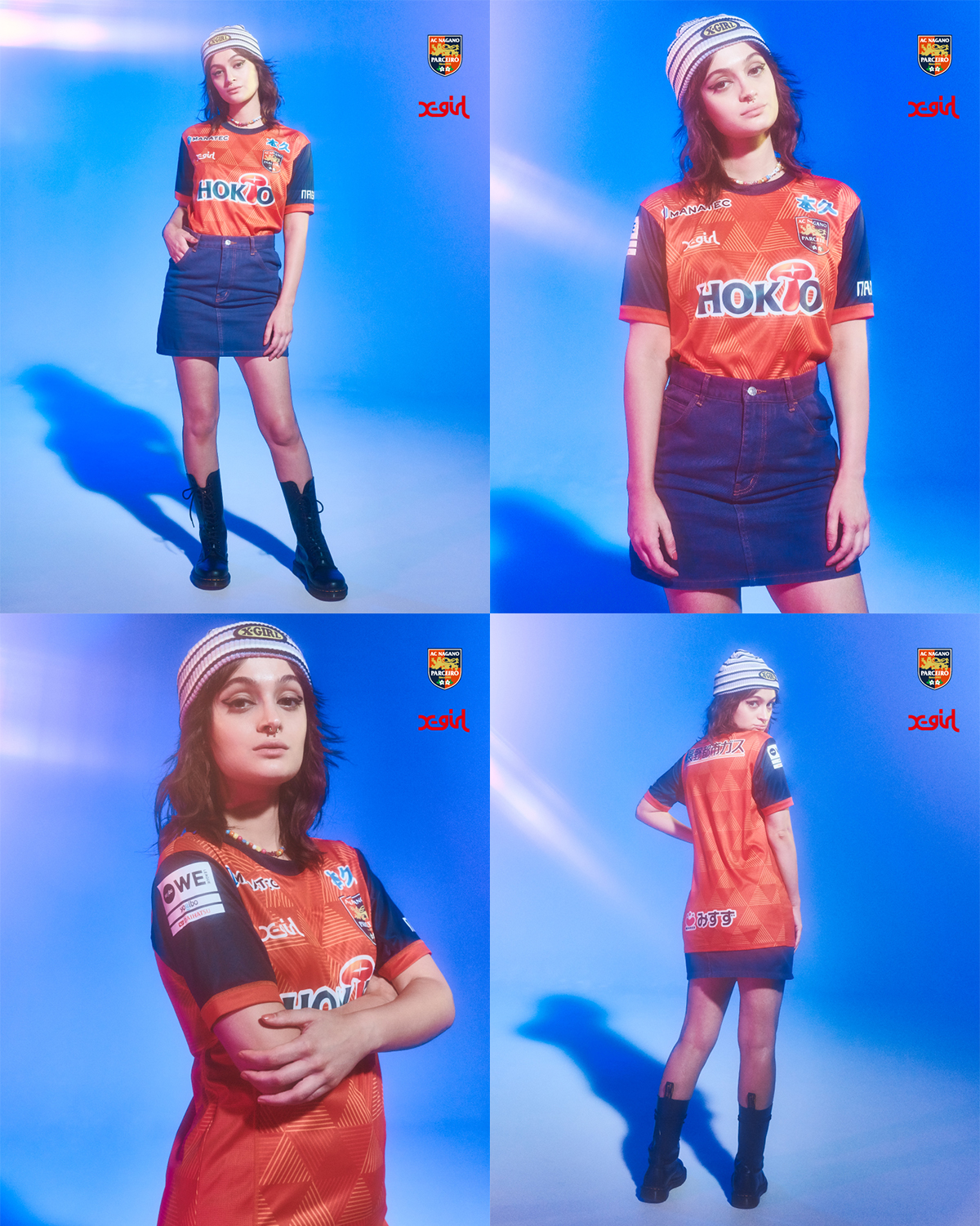
Mynavi Sendai Ladies
The city of Sendai where Mynavi Sendai Ladies hails from is famous for the Sendai Tanabata Festival. The club’s antecedents, Vegalta Sendai, gets its name from Vega and Altair from the Tanabata story. Together with Deneb, Vega and Altair make up what’s known as the Summer Triangle, an astronomical asterism. Mynavi Sendai Ladies’ uniform is blue and features Deneb on the clubs’ emblem for both the field players and goalkeeper.
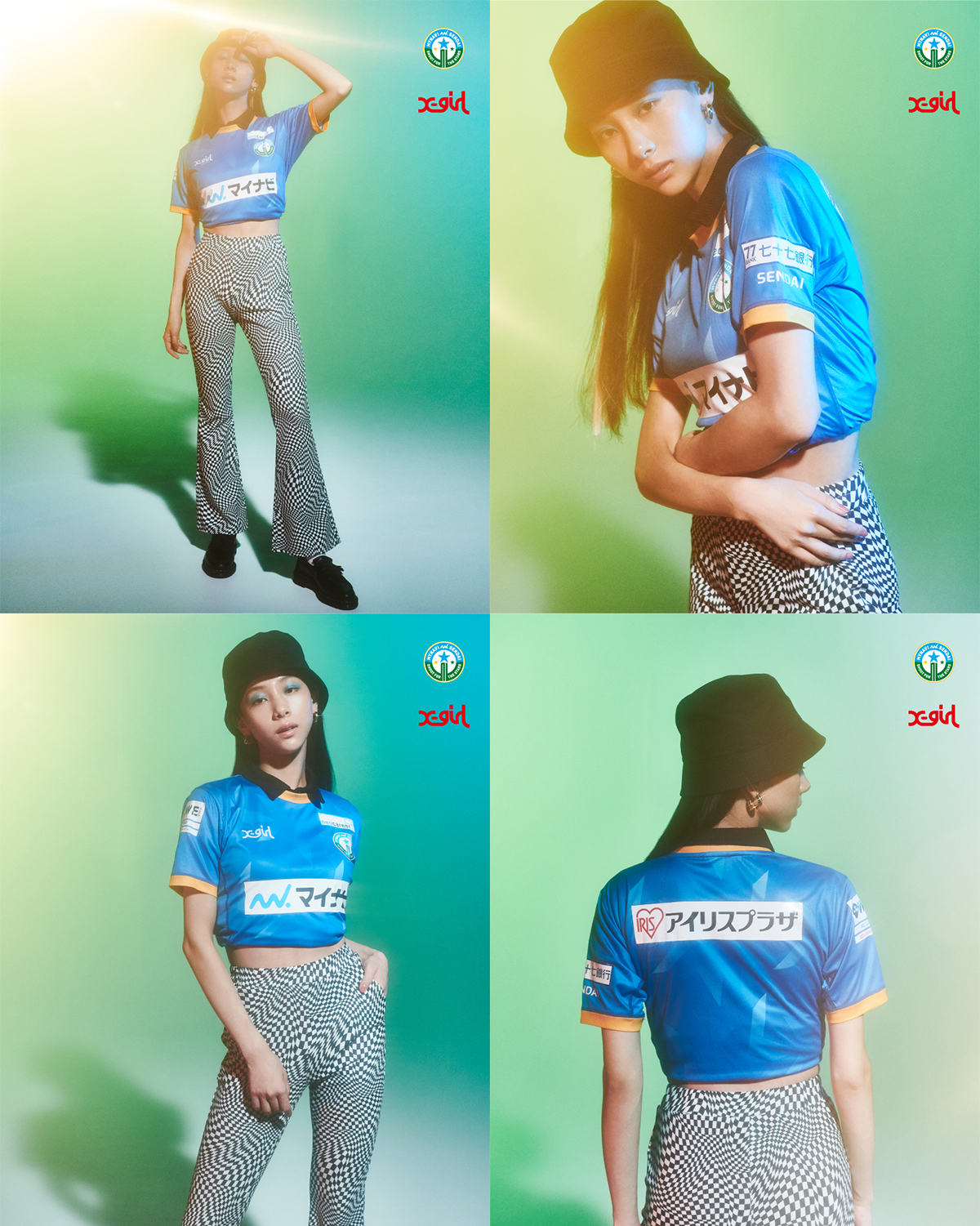
Chifure AS Elfen Saitama
Chifure AS Elfen Saitama formed in 1985 with a focus on women in soccer. Their new uniform, too, was made with women wearing it in mind in terms of both the design and colours. The blue is different from the club’s iconic elfen blue colour and instead uses a special indigo dyeing technique. It pays respect to both the potential of female athletes while weaving in traditional Japanese design.

Omiya Ardija Ventus
Omiya Ardija Ventus’ uniform uses the same design as Omiya Ardija for their 2021 season. It incorporates bonsai motifs as a nod to the bonsai industry in Saitama.


-
KYARY PAMYU PAMYU meets IMABARI: A Visit to the Historical Sea Route
Imabari is a city in Ehime Prefecture that faces the Seto Inland Sea. Since olden times, it has flourished as an important location for marine traffic. It’s home to a bounty of recognised national treasures and historical heritage sights, and is also famous for its production of citrus fruits such as mikan. Japanese pop star, model, and icon Kyary Pamyu Pamyu took a trip to this ancient city to discover its wonder and beauty.
A Visit to the Historical Sea Route
Oyamazumi Shrine
A ‘power spot’ revered by prominent people


Oyamazumi Shrine has been revered by prominent figures throughout history as a place dedicated to the god of the mountain, god of the ocean, and the god of war. It’s home to numerous Important Cultural Properties which are available for viewing by the public such as the armour worn by the military commander Minamoto no Yoshitsune when the Minamoto clan won the Genpei War (1180-1185), armour worn by women, and more. The shrine is also a notable power spot for the ancient tree that has stood there for 2,600 years and is now recognised as a natural monument of Japan. Power spots are places in Japan where the spiritually-inclined draw energy from.
Information
Oyamazumi Shrine
Address: 3327 Omishimacho Miyaura, Imabari, Ehime 794-1393, Japan
TEL: 0897-82-0032
Opening Hours: Sunrise to 17:00
National Treasure Building: 8:30-17:00 (Last Entries 16:30)
Official Website: https://oomishimagu.jp/
Kurushima Kaikyo Service Area
Lip-smacking food aplenty


If you’re one for great views, then the Kurushima Kaikyo service area is a must-visit, offering a panoramic look at the Kurushima Strait of the Seto Inland Sea. The service area is very well know particularly for the Jaguchi Mikan Juice, something of a city legend in Ehime where you can enjoy fresh mikan juice straight from a tap. You can also tuck a rice bowl dish made with tachiuo hairtail caught in the Seto Inland Sea that’s made to look like Kurushima Kaikyō Bridge, or try Imabari’s soul food dish: the Imabari Yakibuta Tamago Meshi, a pork, egg, and rice bowl. Don’t pass up the chance to snap a photo at the designated photo spot with the Seto Inland Sea in the back either like Kyary above.
Information
Kurushima Kaikyo Service Area
Address: 3-9-68 Ohamacho, Imabari, Ehime, 794-0002, Japan
Food Court: [Weekdays] 8:00-21:00 / [Weekends & Holidays] 7:00-22:00
Shops: [Weekdays] 8:00-21:00 / [Weekends & Holidays] 7:00-22:00
Outside Shopping Area & Cafes: [Weekdays] 9:00-17:00 / [Weekends & Holidays] 9:00-18:00
Official Website: https://www.jb-highway.co.jp/sapa/kurushima.php
Murakami Suigun Museum
Dedicated to the Imabari heroes who protected the ocean
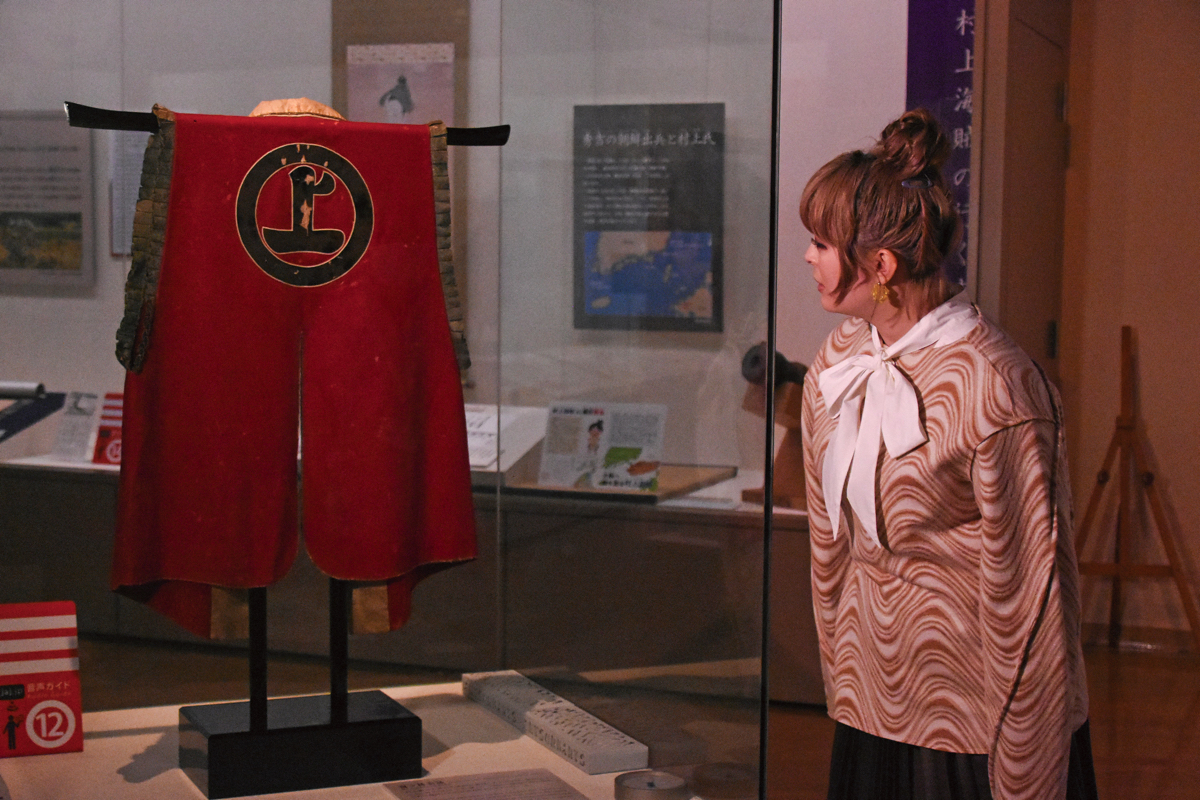

Murakami Suigun Museum is dedicated to kaizoku—pirates, or lords of the sea—something which conjures to mind villainy or bad guys, but the Murakami pirates were also considered heroes who helped maintain order and protect the sea during the Sengoku warring period of Japan. The museum features many displays of Murakami family treasures including the battle surcoat which the pirate leader wore over his armour, proudly bearing the Murakami family crest. Visitors can wear replicas of this coat, which Kyary tired herself: “Now I’m sorta like a military commander too,” she said.
Information
Murakami Suigun Museum
Address: 1285 Miyakubocho Miyakubo, Imabari, Ehime 794-2203, Japan
TEL: 0897-74-1065Opening Hours: 9:00-17:00
Closed: Mondays (or Tuesday if the Monday falls on a public holiday) / New Year Holidays (Dec 29-Jan 3)
Official Website: https://www.city.imabari.ehime.jp/museum/suigun/
Roadside Station Yoshiumi Iki-iki-kan
A bundle of fun and entertainment in one place

Roll on up to Roadside Station Yoshiumi Iki-iki-kan to enjoy a shichirin BBQ feast with fresh seafood caught in the Seto Inland Sea while gazing out across Kurushima Kaikyo. This building complex serves as a resting spot and is also the perfect place to purchase local souvenirs including Ehime specialty products. It’s also famous for its offering the chance to board a boat to ride around Kurushima Kaikyo, renting out bicycles, and more. You’ll also be able to meet Koro-chan, a popular fish who has lived there for 30 years.
Information
Roadside Station Yoshiumi Iki-iki-kan
Address: 4520-2 Yoshiumichomyo, Imabari, Ehime 794-2114, Japan
TEL: 0897-84-3710
Opening Hours: 9:00-17:00
Restaurant: 10:00-16:00 (Last Orders 15:00)
Closed: New Year’s Day (and certain days in winter)
Official Website: http://www.imabari-shimanami.jp/ikiiki/
Dolphin Farm Shimanami
Meet the cute and friendly dolphins

Dolphin Farm Shimanami, which is connected to Hakata Beach, is the best and biggest place in Japan to interact with dolphins. Visitors can get close to them and the dolphins will show off their tricks and skills. There’s even a car camping area you can stay at.
Information
Dolphin Farm Shimanami
Address: 1673 Hakatacho Kanoura, Imabari, Ehime 794-2302, Japan
TEL: 0897-72-8787
Opening Hours: 9:00-17:00
Closed: On days with bad weath
Official Website: https://www.df-shimanami.com/
Hakata Beach
A white sandy beach rolling out 200-meters

Hakata Beach is located at the base of Oshima Bridge in Hakata. The beach is famous for its salt which is best tried on their popular sweet-tasting sea salt ice cream.
Information
Hakata Beach
Address: 1668-1 Hakatacho Kanoura, Imabari, Ehime 794-2302, Japan
Sea Bathing: Early July – Late August
Official Website: https://www.city.imabari.ehime.jp/kanko/spot/?a=198
Imabari Towels
High quality towels woven with tradition and technique


Imabari is the biggest producer of towels in Japan. Even their white towels alone have countless types you can choose from, allowing you to pick which level of softness and comfort you want. The iconic brand logo is also impactful, capturing the quality, production, and enthusiasm that the makes have for the product. Kyary herself uses them all the time!
Information
Imabari Towel
Official Website: https://www.imabaritowel.jp/
Sunrise Itoyama
Need a bike?



Sunrise Itoyama, located in the Imabari Central Cycling Terminal, is a rental bicycle service that has bikes and helmets for everyone’s needs. Rent out a bike and ride the Shimanami Sea Route which connects Ehime and Hiroshima with a series of bridges that hop across the islands of the Seto Inland Sea.
Information
Sunrise Itoyama
Address: 2-8-1 Sunabacho, Imabari, Ehime 794-0001, Japan
TEL: 0898-41-3196
Rent-a-Cycle Details: https://www.sunrise-itoyama.jp/archives/rentacycle/
Official Website: https://www.sunrise-itoyama.jp/
Marutomi
The famous restaurant known to every local

If you want the real experience of Imabari’s yakitori soul food, you should visit Marutomi, a yakitori eatery. Imabari yakitori is different from the usual Japanese yakitori as it doesn’t come skewered. Instead, the chicken is cut into small pieces and fried that way. One of the most popular ways to have it is with the skin on so the outside is crunchy and the inside succulent. It goes perfect with a cup of sake too.
Information
Marutomi
2-3-6 Katayama, Imabari, Ehime 794-0063, Japan
TEL: 0898-23-2740
Opening Hours: 17:30-22:00
Closed: Wednesdays
Official Website: https://maru-marutomi.jp/
Imabari Castle
A castle by the sea


Imabari Castle, built by the daimyo Tōdō Takatora, is known famously as one of Japan’s three “Castles on the Sea” and was also listed in Japan’s Top 100 Castles. When it was first constructed, boats could enter the moat from the ocean. It’s a site that breathes the prosperity that Imabari has enjoyed as a significant location for maritime traffic, the same Imabari that the Murakami pirates sought to protect. Head on up to the top of the castle to stand on the observation deck and gaze at an unbroken view of the city.
Information
Imabari Castle
Address: 3-1-3 Toricho, Imabari, Ehime, 794-0036, Japan
TEL: 0898-31-9233
Opening Hours: 9:00-17:00
Closed: December 29 – December 31
Official Website: https://www.city.imabari.ehime.jp/museum/imabarijo/
Kirosan Observatory Park
A breathtaking spectacle to remember

Kirosan Observatory Park is officially recognised by Setonaikai National Park. Standing atop the observation deck fills the eyes with wonder as they gaze upon a panoramic stretch of Imabari, the Seto Inland Sea, and Kurushima Kaikyo all at once. Kyary wrapped up her time in Imabari here as the sunset coloured the sky and sea in warm evening hues.
Information
Kirosan Observatory Park
Address: 487-4 Yoshiumicho Minamiura, Imabari, Ehime 794-2115, Japan
No Fixed Holidays
Open 24-hours a day
Official Website: https://www.city.imabari.ehime.jp/kanko/spot/?a=182
Imabari Tourism Information: https://www.city.imabari.ehime.jp/kanko/
We hope you enjoyed joining Kyary on her adventures across Imabari, and perhaps she even got you a little curious in wanting to visit the city yourself. It’s a treasure trove filled with vistas by the sea, in nature, and in the city itself with its Important Cultural Properties. Food is also a big part of travel for many people, so you can rest assured that your belly will be satisfied in Imabari as you try their speciality mikan, fresh seafood fished in the Seto Inland Sea, and more.
Information
Kyary Pamyu Pamyu
Official Instagram: https://www.instagram.com/kyarypappa (@kyarypappa)
Official Twitter: https://twitter.com/pamyurin (@pamyurin)
Official Website: http://kyary.asobisystem.com/
-
All About Matsuyama | Final Episode: Introducing the New Matsuyama Tourist Information Centre
The reception staff are ready and waiting to greet customers with a smile
The all new Matsuyama Tourist Information Centre finally opened in the heart of Matsuyama—the capital city of Ehime Prefecture in Japan—in Okaido on May 27. You’ll find it on the first floor of Matsuyama Mitsukoshi which isn’t even a one-minute walk from Okaido Station. It features an interior fusion combining history and culture with a design inspired by Matsuyama Castle while also throwing in a contemporary feel.

Six giant screens serve as the perfect place for tourism-related PR of Matsuyama
The first sight many visitors will lay their eyes on upon entering the information centres are the six screens spanning 1.5 meters high and 4.5 meters across the wall. Here, a variety of promotional material centred on the highlights of Matsuyama will be displayed.
The information centre offers many useful services, including for foreign customers who don’t speak Japanese. There is a translation and interpreting service, money exchange, rental electrical outlets for smart devices, and more. The staff themselves are multilingual, but the interpreting service includes access to a call centre which you can access using the free WiFi or using an iPad. The availability of foreign currency exchange is also extremely beneficial as Matsuyama is a city abundant with long-standing shops that have been around for decades and longer. Another convenience with the centre is easy access to public transport. If you’re looking to travel around the prefecture, we recommend paying a visit to the centre first as it’s sure to provide valuable information. You can even rent mobile batteries for your smartphone to lessen the stress when sightseeing.

The pictogram shows the many handy services available
Visitors will also find a comprehensive duty-free counter inside the information centre which covers all stores in Okaido, Gintengai, Matsuchika Town, Dogo Shoten, and Ropeway Shotengai. You must spend over ¥5,000 (before tax) on products to be duty-free eligible. Since it’s a comprehensive service, if you have multiple receipts you can be exempt from tax as long as all your receipts exceed ¥5,000. Participating stores have special stickers plastered up inside so tourists can quickly and easily identify them.

Stores participating in the duty-free service have stickers and signs to show it
For example, if you spend ¥500 at participating stores in Dogo Shotengai, ¥1,000 in Okaido Shopping Street, and ¥3,500 in Gintengai Shotengai, and take all three of those receipts adding up to ¥5,000 to the information centre, you can get your items duty free. But keep in mind that the receipts have a validity period on them, so be sure to check opening hours.
The Matsuyama Tourist Information Centre serves as the perfect site for bringing in all kinds of tourists, including foreign travellers, to Matsuyama post-COVID. The information also goes by the cute nickname “Dan Dan info.” Dan dan is an old Ehime phrase meaning “thank you” and ties in with the smiling and hospitable welcome staff wish to greet guests with. It’s exciting to look into the future and see how Matsuyama’s tourism and economic growth will develop in its shopping districts, stores, and elsewhere. Make one of your first stops the Matsuyama Tourist Information Centre when visiting the city.
Information
Matsuyama Tourist Information Centre
Opened: May 27, 2021
Address: Matsuyama Mitsukoshi Floor 1F Atrium Space Court, 3-1-1 Ichibancho, Matsuyama, Ehime
Homepage: https://matsuyama-tourism.com/
Facebook: dandaninfo
Instagram: dandaninfo_matsuyama
-
All About Matsuyama | Episode 8: Souvenirs Are Part of Matsuyama’s Fun and Are Everywhere
The all new Matsuyama Tourist Information Centre opened in the heart of Matsuyama—the capital city of Ehime Prefecture in Japan—in Okaido on May 27. In celebration of its opening, this new featured series by MOSHI MOSHI NIPPON will explore the wonders of Matsuyama, a city abundant with places to shop, leisurely hot spots, must-visit restaurants, and opportunities to dive deep into its history and culture. You’re sure to discover something new and exciting about Matsuyama in this series.

From tasty treats to home and lifestyle goods, Matsuyama has no shortage of souvenirs
Popular sightseeing spots and delicious food you can’t get anywhere else—these are all part of the fun experience to be had when travelling. To wrap up your time there and memorialise all that’s happened, nothing’s better than picking up a little souvenir. In Episode 8 of All About Matsuyama, we take a look at the many wonderful items you can take home with you as souvenirs from food to traditional handicrafts, special dyed fashion and accessories, and more. MOSHI MOSHI NIPPON has picked out a range of delightful treats like Matsuyama’s famous tartes, jakoten, three-colour botchan dango as well as Tobe ware porcelain which is an Ehime tradition, and iyo-kasuri fabric which is one of Japan’s three main kasuri fabrics.
First on the list is the ‘tarte,’ a speciality product of Shikoku which is more of a sponge cake. They’re made of a soft and fluffy sesame seed-coloured sponge and coarse red bean paste. A famous treat of Matsuyama, you can find these tarts just about anywhere in Okaido Shopping Street, near Dogo Onsen, and elsewhere.
Jakoten is considered a soul food of Ehime Prefecture. It’s made from fish that are blended into a paste and fried. You can find jakoten everywhere in Matsuyama, but every restaurant serves theirs with different textures and flavours. Many places fry them fresh, so be sure to try a bunch to compare the flavours and then you can decide which to buy as a souvenir. There are even places so popular that they have lines outside them before they even open.
The botchan dango is something many of our readers have probably seen or heard about. These three-coloured skewered dango are served bite-sized, cute enough to snap a photo of. The ones sold at Dogo Onsen are something of a speciality. They have their name from Natsume Soseki’s novel Botchan. You’ll find them all around Dogo Shotengai.
Tobe ware is a traditional type of porcelain from Tobe in Ehime, known for its smooth touch and durability. This traditional porcelain has been handed down from old times until today, and in recent years, ceramists have been hammering out their own unique shapes, so have become popular as stylish, everyday use lifestyle items.
You can’t talk about Ehime’s traditional craftwork without mentioning iyo-kasuri fabric. Matsuyama used to have huge production output of this fabric type, which stands as one of three of Japan’s most famous kasuri fabrics alongside kurume-gasuri from Fukuoka and bingo-kasuri from Hiroshima. Production has dwindled in modern times, but if you go to Art Labo KASURI Rekishikan, you can learn all about iyo-kasuri. There are lots of gorgeous iyo-kasuri products to buy like cute pouches, bags, and more.
And that’s our list of must-grab souvenirs. There are of course endless other things you can get your hands on, so if you’re lost on what to pick up, try asking at the Matsuyama Tourist Information Centre.
Stay tuned for the next and final episode of All About Matsuyama.
Information
Matsuyama Tourist Information Centre
Opened: May 27, 2021
Address: Matsuyama Mitsukoshi Floor 1F Atrium Space Court, 3-1-1 Ichibancho, Matsuyama, Ehime
Homepage: https://matsuyama-tourism.com/
Facebook: dandaninfo
Instagram: dandaninfo_matsuyama
-
All About Matsuyama | Episode 7: Mitsuhama Port is a Nostalgic Trip Down Memory Lane
The all new Matsuyama Tourist Information Centre is set to open in the heart of Matsuyama—the capital city of Ehime Prefecture in Japan—in Okaido on May 27. In celebration of its opening, this new featured series by MOSHI MOSHI NIPPON will explore the wonders of Matsuyama, a city abundant with places to shop, leisurely hot spots, must-visit restaurants, and opportunities to dive deep into its history and culture. You’re sure to discover something new and exciting about Matsuyama in this series.

The Mitsu Ferry, managed by Matsuyama City, has been running for over 500 years
We’ve covered much about the land in this series, so in Episode 7 of All About Matsuyama, we’re heading to the sea. Mitsuhama Port sits in the western part of Matsuyama, Ehime. Mitsuhama is a port town that flourished during and following the Edo Period as the ‘front door to the ocean.’ Visiting the town is a trip down memory lane as there are still pseudo Western-style buildings from the Meiji and Taisho periods that suffered damage from the war, as well as traditional Japanese houses, and more. The Mitsuhama Shotengai shopping district was once a bustling place for the fishing and trade industries. Today, buildings have been renovated and taken on new managers who have turned places into stylish cafes, galleries, and other businesses, creating a quaint mix of new and old.
Matsuhama Port is a 15-minute car ride from Matsuyama Station, which itself is connected to other must-visit spots we’ve covered in this series such as Matsuchika Town and Gintengai. If you’re looking for a place to walk around, the port area is somewhere you can really stretch your legs. It’s right outside Mitsu Station from where you can see Mitsuhama Shotengai lined with concrete shops. The street has an old-timey Japanese nostalgic feeling to it. The number of young people frequenting the local shops and houses that have been renovated into various stores is on the rise which is changing its image from a former port town to a hip place to go for shopping. In the summer there are firework festivals and events held by the shopping district, so it’s quickly becoming one of Matsuyama’s new tourist spots.

A luxurious sea bream meshi-zen set meal
If you’re strolling through Mitsuhama Shotengai, one place we absolutely want to recommend people visit is Taimeshi, a restaurant that set up shop inside a Japanese house that’s registered as a Tangible Cultural Property. They have only one order on the menu as pictured above: the Taimeshi-Zen, a sea bream set meal, which is made even more enjoyable by the restaurant’s elegant decor.
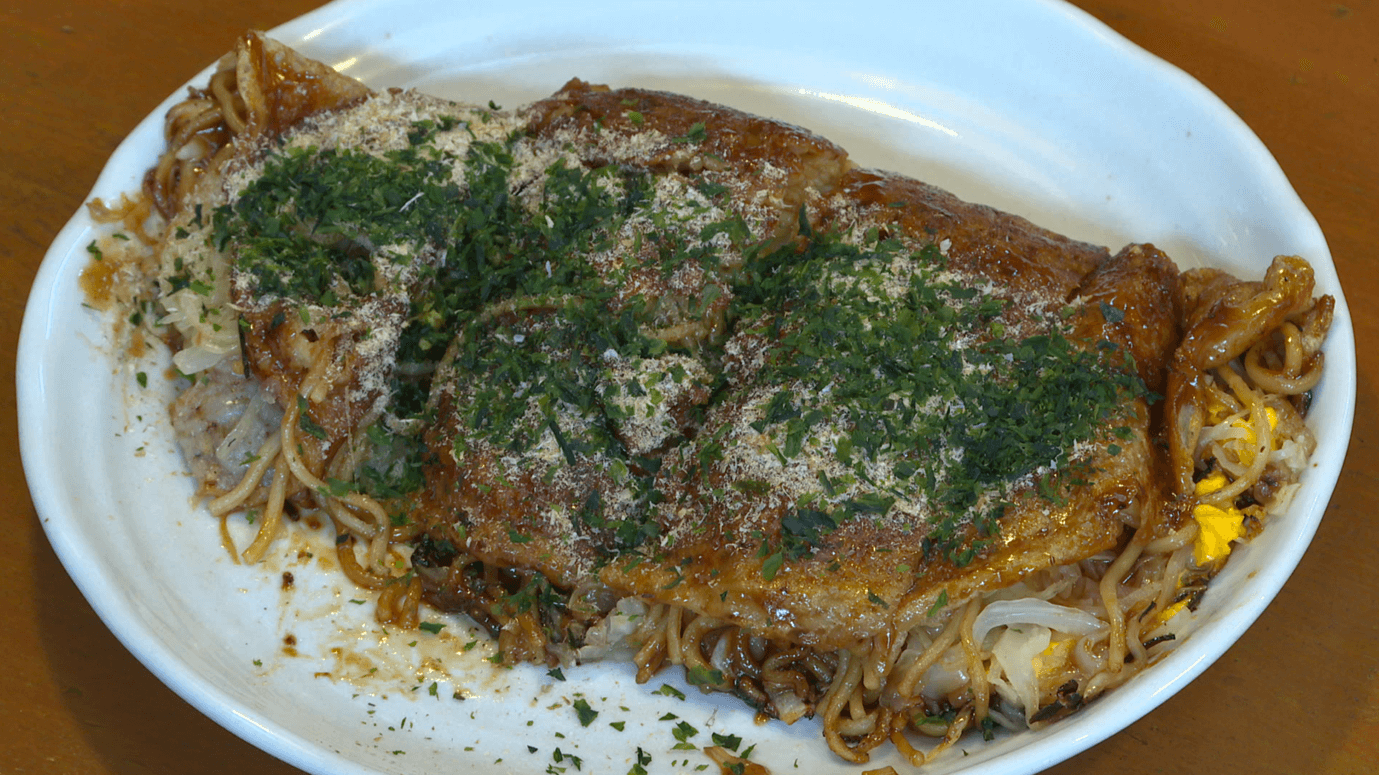
Mitsuyamayaki is a fast food delicacy of Mitsuhama
Everyone needs to try the local fried food as well. The most popular is their okonomiyaki, a common food in Japan. However, the type served in Mitsuhama, known as Mitsuhamayaki, is a little different from the Osaka or Hiroshima styles. They load the batter with noodles and garnish with chikuwa fish-paste, an ingredient long-loved in Mitsuhama, and the secret ingredient—fish flakes. Beef is used as the meat filling. The result is the kind of flavours you’d imagine tucking into in a port down. Each restaurant that serves Mitsuhamayaki serves theirs with their own original sauces too, so no two places will be exactly the same. Try several to compare the tastes.
Something else that can’t be passed up when visiting Mitsuhama is the Mitsu Ferry, a boat with a 500-year history that rides up and down the river and is free of charge. Not only has it been used since the Muromachi Period for transporting goods, it also enjoys 40,000 passengers every year having been recognised as a tourist spot in recent years.
Baishinji Station, which is right next to Minatoyama Station and is how you get to the Mitsu Ferry, is known for being the location of the final episode of the 1991 Japanese drama series Tokyo Love Story. There, visitors can also gaze at the gorgeous view of the Seto Inland Sea, pay a visit to Baishinji Garden to enjoy the plum and cherry blossoms, and more.
Matsuyama is vast and full of many places to enjoy. Mitsuhama is one of these locations and is easily accessed by train from the city centre. It’s a tranquil place where you can feel both the preserved old atmosphere and the modern changes. It’s sure to continue growing as one of the city’s must-visit sightseeing spots.
Information
Taimeshi
Homepage: http://taimesi.net
Address: 1-3-21 Mitsu, Matsuyama, Ehime
味処いとさん
住所 愛媛県松山市住吉2-8-33
-
All About Matsuyama | Episode 6: Feast Your Eyes Upon the City’s Food
The all new Matsuyama Tourist Information Centre is set to open in the heart of Matsuyama—the capital city of Ehime Prefecture in Japan—in Okaido on May 27. In celebration of its opening, this new featured series by MOSHI MOSHI NIPPON will explore the wonders of Matsuyama, a city abundant with places to shop, leisurely hot spots, must-visit restaurants, and opportunities to dive deep into its history and culture. You’re sure to discover something new and exciting about Matsuyama in this series.
One of the biggest attractions to anyone travelling abroad, or even domestically, is the food. In Episode 6 of All About Matsuyama, we give you a mouth-watering tour of Matsuyama’s food scene. Every area of the city is bursting with flavours to be savoured, so here’s our list of places we can’t recommend enough, all located around Okaido Shopping Street, Matsuyama Gintengai, and Matsuchika Town.
Higiriyaki
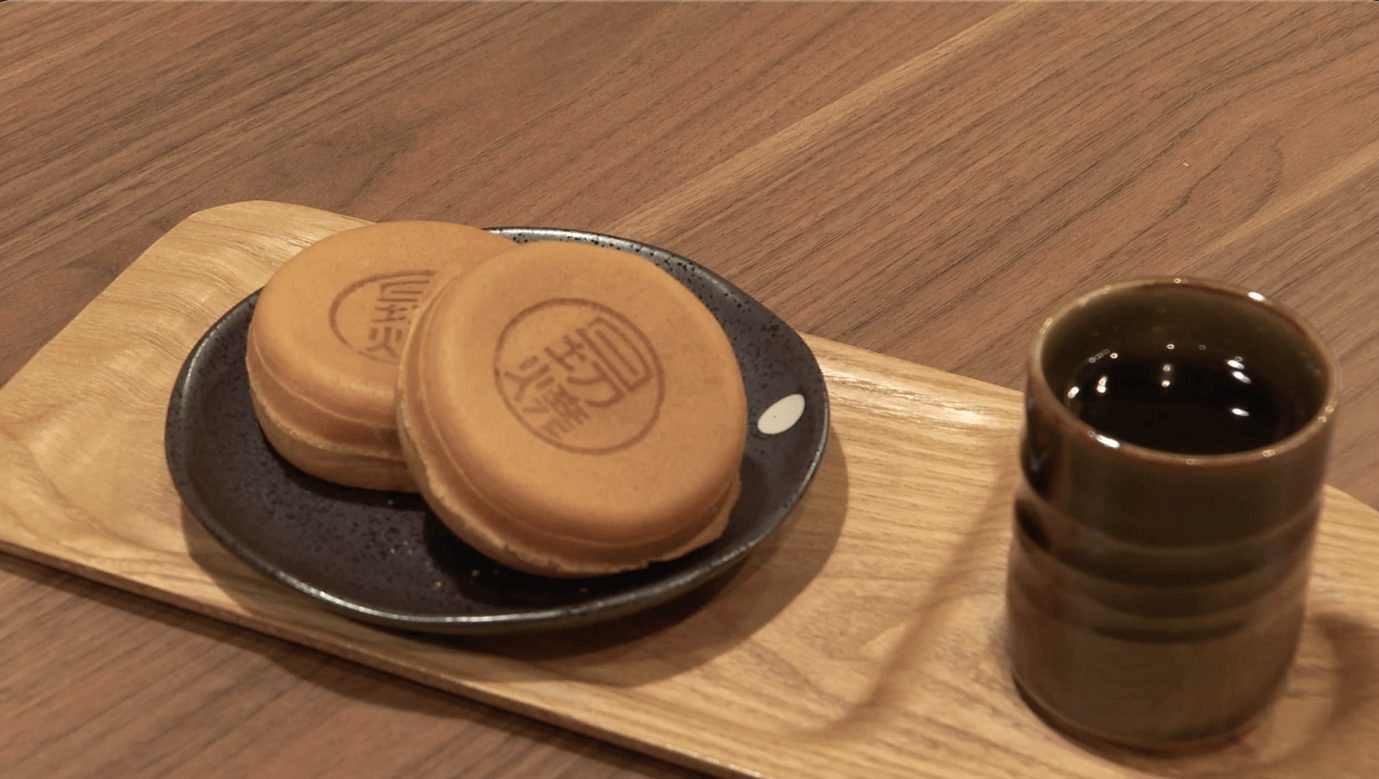
Higiriyaki is a sweet local treat from Matsuyama with chewy skin and filled with hot adzuki bean paste
The first delectable treat MOSHI MOSHI NIPPON recommends begins at a shop in Okaido Shopping Street. The ‘higariyaki’ is a local food that was first created during the Taisho period in Japan and is also the name of the shop that sells them. It’s said that the first higariyaki was made at Zenshoji Temple which is located in front of Matsuyama Station. The temple is nicknamed “Ohigiri-san,” and the dessert’s name derives from the Higiri Jizo god that is worshiped there. Its dough is made with high quality wheat flour and eggs and is stuffed with an azuki bean paste recipe that has been preserved and passed down since it was first created. You get to see the higiriyaki being made fresh before you when ordering one.
Noma Kajuen noma-noma

Every cup of their refreshing juice is freshly squeezed
Noma Kajuen noma-noma is a juice and gift shop managed by Noma Kajuen, a fruit grower in Ehime which ships tasty mikan oranges around Japan. noma-noma not only serves fresh juice but ice creams, parfaits, drinkable jelly, and other takeout items too – all made with mikan. They have plenty of fruity gifts too, so don’t pass up the opportunity to try some sweet Ehime mikan.
Roken Manto

The only place left making steamed bread with koubokin yeast fungus
Next on the menu is Roken Manto which is famous in Matsuyama for its steamed bread. This bread is made with koubokin yeast fungus and has been since 1931. No preservatives or other additives are used so they don’t have a shelf life – you can only buy and eat them from here. The bread was adapted in Kurashiki from the Chinese steamed bun to cater to Japanese palettes. Fillings include pinto beans, raisins, cheese, cocoa, and more. None are overly sweet so make for a nice easy bite. They are particularly popular with male customers who you often see in droves buying them in the evenings and late into the night.
Nabeyaki Udon Asahi

A bowl of their sweet udon will leave you feeling happy
We’re moving locations now – towards Matsuyama Gintengai. Nabeyaki Udon Asahi is a famous udon bar in Matsuyama known for its sweet tasting nabeyuki udon, something of a soul food to the locals. The restaurant opened in 1947 and has been frequented by locals since. Their udon is simple but delicious, made with a sweet broth, chewy noodles, kamaboko fish paste, chikjuwa fish paste, and boiled egg. The restaurant itself has a retro vibe to it which serves as the perfect setting for your bowl of udon. It will definitely have you wanting a second visit. One thing to note is that the restaurant closes once all noodles have been served, so we recommend visiting in the early afternoon.
Usuzumi Yokan

The quality of the adzuki beans elevate this dessert to sublime new heights
The usuzumi yokan is a famous sweet of Matsuyama which was first made over 1,000 years ago when Empress Jito visited Dogo. Its surface has a sheen to it, and inside are white beans made to look like cherry blossom petals, giving it an extravagant appearance. It’s a sweet famous across Japan having won awards at national confection competitions. You can order them to have-in at this cafe if you like – and their gorgeous Tobe ware plates are available to buy too. Both would be great as souvenirs bought together.
Tonkatsu Katsuyoshi

The crunchy, mouth-watering tonkatsu is nice and light and not fatty at all
Last up on our list takes out to Tonkatsu Katsuyoshi in Matsuchika Town. They serve up some seriously succulent and juicy meat covered in a crunchy layer and served with an in-house sauce. Their menu is long, and all set meals come with a bowl of grated Japanese yam soup. Matsuchika Town is full of popular eateries with lots of takeout items to enjoy, so we recommend visiting there before moving away from the station area.
Matsuyama is loaded with restaurants so you’ll never go hungry. The places on this list, and many others, are waiting for your arrival.
Information
Higiriyaki
Homepage: https://higiriyaki.jp
Address: 2-5-1 Okaido, Matsuyama, Ehime
Noma Kajuen noma-noma
Homepage: https://www.kajuen.co.jp/shop/nomanoma/
Address: 1-4-20 Okaido, Matsuyama, Ehime
Roken Manto
Homepage: http://home.e-catv.ne.jp/takeuchi/
Address: 2-3-15 Okaido, Matsuyama, Ehime
Nabeyaki Udon Asahi
Address: 3-10-11 Minatomachi, Matsuyama, Ehime
Usuzumi Yokan
Homepage: http://www.usuzumi.co.jp
Address: 1-2-2 Okaido, Matsuyama, Ehime
Tonkatsu Katsuyoshi
Homepage: http://matsuchika-town.com/shop/?mode=shop_detail&shop_id=5
Address: Matsuchika Town, 5-1-1 Minatomachi, Matsuyama, Ehime
-
All About Matsuyama | Episode 5: A Shopping Paradise at Every Turn
Five unique shopping districts loved by Matsuyama locals
The all new Matsuyama Tourist Information Centre is set to open in the heart of Matsuyama—the capital city of Ehime Prefecture in Japan—in Okaido on May 27. In celebration of its opening, this new featured series by MOSHI MOSHI NIPPON will explore the wonders of Matsuyama, a city abundant with places to shop, leisurely hot spots, must-visit restaurants, and opportunities to dive deep into its history and culture. You’re sure to discover something new and exciting about Matsuyama in this series.
When visiting Matsuyama, some of the must-visit hot spots include places like Dogo Onsen and Matsuyama Castle. While it’s true you’re sure to enjoy a satisfying sightseeing experience visiting these worthwhile locations, if you’re looking for an even truer Matsuyama experience, you’ll want to hit up the city’s shopping districts. In Episode 5 of All About Matsuyama, we’re looking at five different shopping districts, each with their own unique characters, and all loved by the locals.
The five places we’re looking at are: Okaido Shopping Street, a bustling street and the biggest shopping district in all of Ehime; Matsuyama Gintengai which is lined with a diverse bounty of stores; Matsuchika Town which is the only underground shopping centre in Shikoku; Ropeway Shopping Street, a beautiful street with an inherently ‘Japanese’ feel to it; and Dogo Shotengai which connects the local station to the main Dogo Onsen site. All five of these places should be listed alongside Matsuyama Castle and Dogo Onsen as tourist hot spots.
Let’s begin with Okaido Shopping Street. Located right by Okaido Station, the street runs 483 meters from Shiden Street to Chifunemachi Street. It’s an enormous, brightly-lit arcade with plenty of things to enjoy throughout the day from the morning farm market to the wine and dine experiences to be had in the evenings. No matter the hour, Okaido Shopping Street is bustling, so if you’re looking for some fun in Matsuyama, this is the place.
Next on the list is Matsuyama Gintengai, which runs from Chifunemachi Street to Matsuyama City Station. It connects directly to Okaido Shopping Street and is split into four districts: Sanchome and Yonchome. This 600 meter space is frequented by young and old shoppers alike, with delectable desserts to tuck into and lifestyle items to adorn your days with.
Matsuchika Town can be accessed via an elevator from Matsuyama Gintengai. It’s connected to Matsuyama City Station and is the only underground shopping district you’ll find in the whole of Shikoku, one of the five main islands of Japan. It’s on the smaller side when compared to Okaido and Gintengai, but as well as various stores, it has a well-known rest and meeting spot which is a symbol of the shopping centre.
Ropeway Shopping Street is a 500 meter road that runs from Matsuyama Ichibancho—which is across from the same Shiden Street that links to Okaido Shopping Street—to the Matsuyama Ropeway cable car station that goes to Matsuyama Castle. It’s home to many old-time shops stocking second-hand books, Japanese instruments, and more. It’s also a barrier-free shopping centre which is something of a rarity in Japan.
The final site on this list is Dogo Shotengai, which is about 10-minutes by train from Okaido Station. It’s an L-shaped arcade that runs 250m from Dogo Onsen Station. It’s known colloquially as Dogo High Collar Street for its smart and chic Meiji Roman vibe. There are many people who walk around the area from the surrounding hotels in yukata. It really has that ‘hot spring town’ vibe.
And that’s our list of five unique shopping districts adored by the locals. Be sure to jot them on your list of places to go when travelling to Matsuyama.
Information
Official Site: https://matsuyama-shotengai.com/
-
All About Matsuyama | Episode 4: Japan’s Famous Bathhouses Dogo Onsen & Dogo Onsen Annex Asuka-no-Yu
Dogo Onsen is registered as an Important Cultural Property of Japan

Dogo Onsen Annex Asuka-no-Yu incorporates Asuka Period-style architecture
The all new Matsuyama Tourist Information Centre is set to open in the heart of Matsuyama—the capital city of Ehime Prefecture in Japan—in Okaido on May 27. In celebration of its opening, this new featured series by MOSHI MOSHI NIPPON will explore the wonders of Matsuyama, a city abundant with places to shop, leisurely hot spots, must-visit restaurants, and opportunities to dive deep into its history and culture. You’re sure to discover something new and exciting about Matsuyama in this series.
In Episode 3 of All About Matsuyama, we head to Dogo Onsen, another famous location that should be added to your Matsuyama bucket list adventures.
Dogo Onsen is Japan’s oldest hot spring, located along Dogo Shotengai, a shopping district that runs 250m from Dogo Onsen Station. Dogo Shotengai is known colloquially as Dogo High Collar Street for its smart and chic Meiji Roman vibe. Dogo Onsen is a 3-story hot spring facility in the heart of Dogo which became the first public bathhouse to be registered as an Important Cultural Property of Japan in 1994.
Conservation and repair work began on Dogo Onsen in January 2019 in order to preserve the bathhouse which boasts a long history spanning over 120 years. It is the first public bathhouse in Japan to operate as an Important Cultural Property while undergoing large-scale reparation.
The preservation work is scheduled to take 7 years during which the Dogo Reborn Project is taking place. The Phoenix from Osamu Tezuka’s manga of the same is watching over the revitalization of Dogo Onsen which will be ‘reborn’ like a phoenix. The project is holding a range of events such as light-ups, projection mapping, animations that people can watch, and more.
Please note however that project mapping is temporarily suspended until May 31, 2021 due to COVID-19.
Dogo Onsen’s history spans more than 120 years. Its on-site sister location, Dogo Onsen Annex Asuka-no-Yu, opened in 2017. This bathhouse is constructed in the style of the Asuka Period. Asuka-no-Yu, like the main Dogo Onsen building, is home to Bijin no Yu, a rare kind of water with a soft texture which flows from the source and is neither heated nor cooled.
Dogo Shotengai, which links together Dogo Onsen and Dogo Onsen Annex Asuka-no-Yu, is an L-shaped arcade and runs from Dogo Onsen Station. It has a roof which means you can walk from the station straight to the bathhouse without getting wet on a rainy day. There are around 60 shops to look around, and if you wear a yukata, you’re sure to enjoy the real Dogo experience. Head back in time in Japanese history with a visit to the Dogo area.
Information
Dogo Onsen Homepage (English): https://dogo.jp/en/
Address: 5-6 Dōgoyunomachi, Matsuyama, Ehime 790-0842, Japan
Access: 5-minutes on foot from Dogo Onsen Station
-
All About Matsuyama | Episode 3: Matsuyama Castle’s History Overlooking the City Throughout History
Matsuyama Castle from high above

Matsuyama’s shitamachi castle town
The all new Matsuyama Tourist Information Centre is set to open in the heart of Matsuyama—the capital city of Ehime Prefecture in Japan—in Okaido on May 27. In celebration of its opening, this new featured series by MOSHI MOSHI NIPPON will explore the wonders of Matsuyama, a city abundant with places to shop, leisurely hot spots, must-visit restaurants, and opportunities to dive deep into its history and culture. You’re sure to discover something new and exciting about Matsuyama in this series.
In Episode 3 of All About Matsuyama, we’re taking a look at Matsuyama Castle, an absolutely indispensable location when travelling to Matsuyama which has and still watches over the development surrounding shitamachi castle town.
Matsuyama Castle sits at the heart of Matsuyama. It was built in 1603 on top of Mount Katsuyama which stands towering at 132 meters tall. At the foot of the mountain are two enclosures: Ninomaru and Sannomaru. The castle grounds are so big that you wouldn’t be able to see everything in a single day. It’s also home to only one of 12 existing original castle towers in Japan, is featured in Japan’s Top 100 Castles list, and was selected as one of the 100 Most Beautiful Historical Sites in Japan. It also ranked as the third best castle in Japan in a 2020 list. You clearly can’t pass up a visit to Matsuyama Castle when travelling to Matsuyama!
There are several ways to get to Matsuyama Castle. You can take the walking route upwards which takes about 30 minutes, but many people take the Ropeway or lift. You can buy a ticket for the Ropeway at the station outside Matsuyama Ropeway Shopping District. You will be greeted by Matsuyama Castle’s mascot character Yoshiaki-kun.
Matsuyama Castle was built following the Battle of Sekigahara by Katō Yoshiaki who was awarded for his service as a retainer of Toyotomi Hideyoshi. The main tower is the only part that has been preserved in its original form. Other parts of the keep have been restored throughout the years due to fires. Several parts of the castle have been designated as Important Cultural Properties including the main tower which can be accessed by visitors who can see what the castle was like when it was first built.
The castle is surrounded by a towering 14-meter stone wall which, though was built in order to prevent enemies from infiltrating, has an air of beauty to it. Two stone walls were built on the mountain slope to stop people from entering via the hillside too. This wall is considered a nationally precious example of Japanese history and is a must-see when visiting Matsuyama Castle.
It’s rare for a castle like this in the middle of a city to have such a history. The view from the very top of the castle keep, which is an extra 30 meters on top of the 132m tower, is a wonderful sight to behold as you gaze across Matsuyama. Many people visit the castle during the daytime, but the castle is actually one of the city’s most beautiful night time spots too. Whichever time of the day you decide to visit, you’re sure to learn much about Matsuyama’s history.
Information
Due to COVID-19, the castle, Ropeway Lift, and Ninomaru Gardens are temporarily closed until May 31, 2021.
Matsuyama Castle Homepage: https://www.matsuyamajo.jp
Matsuyama Castle Ropeway is a 5-minute walk from Okaido Station.

